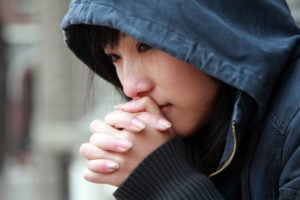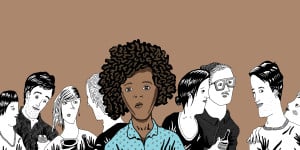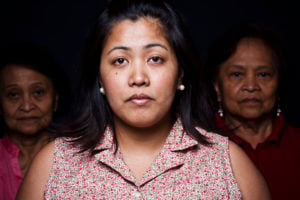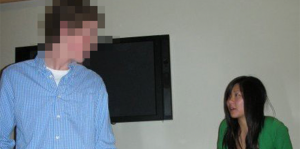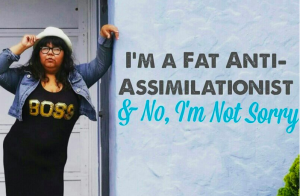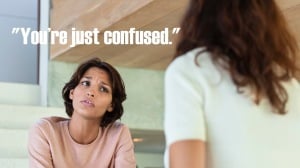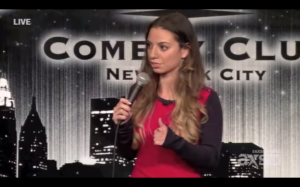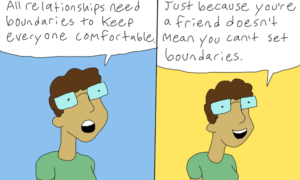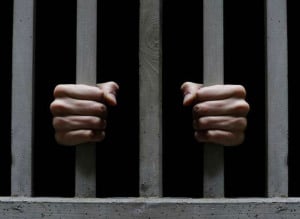
Source: Politic365
Violence is not isolated to one community, and yet media coverage has perpetuated notions that very specific communities are inherently more violent than others.
By critically examining media, it becomes evident that tropes are painted that need to be dismantled. Groups on the margins of identity, not in the default white mainstream, are stereotyped as more violent.
These manufactured tropes limit understanding of violence and do not tackle the root causes of the problem. Instead, these tropes erase the fact that violence is committed by many people.
Media finds ways to asymmetrically report certain embodiments committing violence; subsequently, subtext erases any complicity others play in the act.
We should be aware of, interrogate, and re-envision the discourse surrounding root causes of violence, as well as how stereotypes are created and how to work towards positive changes.
So here are four stereotypes about disenfranchised people that damage cultural consciousness around who perpetuate violence.
1. Racialized Youth Are Disadvantage Due to Over-Policing and Public Schooling
Unwarranted surveillance of certain populations begins in grade school, and nonblack individuals are complicit.
We see this with young men of color, specifically young black men, subjected to the school-to-prison pipeline.
From a young age, racialized boys are predetermined as violent and in need of reform, and we also see these sentiments echoed through them. Children who are racialized and have lower socioeconomic status are deemed fundamentally violent and therefore expendable.
Schools have largely become a stepping stone in managing marginalized populations on a large scale. The education system is state-controlled and attendance is mandatory, yet links have been shown illustrating the role educators play in gatekeeping youth of color disproportionately into the penal system.
The education system is one of the first places where we witness social complicity in demonizing and over-policing certain bodies. Those we are supposed to trust, those who make a salary from our tax money, most heavily police and criminalize black youth unjustly.
We see racialized children face much harsher punishments from a young age than their white peers. Unsurprisingly related, prison system ratios are grossly distorted as charges for similar crimes are higher for men of color than white men, creating unwarranted racist narratives in society.
This villainizing of racialized youth follows these young men into adulthood and translates into tropes, as well as attacks on their humanity.
2. Violence Is Not a Phenomenon Within Certain Racialized Communities
The racialized body is a place of constant critique and is subject to excessive surveillance under the police state from a young age.
When a crime surfaces in media, we witness repeated scripts for white perpetrators – and then everyone else. Race as a concept – although entirely unrelated to particular instances of violence – is dragged into the discussion to serve as a buffer and as a form of derailment. Subsequently, a dichotomy is created where men of color are subjugated to stereotypes and sweeping generalizations.
Only some perpetrators are held accountable when specific men are thought of as perpetrators of violence.
To engage in violence discourse intersectionally, we must recognize that the way we observe violence has to be unpacked, but also examined.
Specifically, we need to analyze the ways in which men of color are thrust under microscopes to have their embodiments and identities tied into the media narrative, whereas white men do not get the same spectacle (or criminal charges). Similarly, many white men are also not given arbitrary labels like “barbaric” labeled onto them or their communities.
All men who commit violent acts should be examined in the same manner. In many ways, bringing in factors like race in order to other those who are perpetrators and not white is a means of derailing a conversation that needs to happen.
While violent acts are not isolated to certain races, many perceive brown and black men as being inherently violent in comparison to white counterparts. These beliefs are illustrated in pop culture repeatedly and translate over in society. We see it in the wrongful murders of black men in the name of defense; we also see it occur against black women.
We see a disproportionate number of brown and black men given sentences that are much longer and harsher than their peers. We also see black women receiving harsher sentences, even in cases of self-defence.
We witness discriminatory views leech into stereotypes and act as a buffer manifesting into very specific types of abusive men. We also witness that white perpetrators receive a very different treatment by media than black victims.
For example, racialized populations face commentary that is much different than their white counterparts in discourse surrounding intimate partner violence.
When Chris Brown assaulted Rihanna, similar discourses arose and suggested that “black and brown men do this, and white men would not do this.”
3. Violence Is Not Isolated to a Religion, and No Religion Is Inherently Violent
Ignorance as a result of false tropes in the discourse surrounding violence has been integral in disparaging certain religions.
Hatred against certain religions that are easier to identify due to religiously symbolic aesthetics is a result of falsified perceptions and villianization.
For example, we saw a variety of hate crimes committed against people who “looked Muslim” after September, 11th, 2001, and these media biases translate over into the villainization of racialized bodies that white embodiment never faces.
We see these tropes reoccur in popular media, making white embodiment the default for non-misogynistic manhood. Many white men are violent and are complicit in school shootings, temple shootings, and violence against racialized women; however, we witness a phenomenon where white men are viewed as anomalies for crime whereas the actions of specific non-Anglo-Saxon religions are universalized to the level of the population.
The exception we witness when white men are scrutinized in harmful ways is when that white man is also Muslim.
4. Racialized Women Are Portrayed Very Differently Than White Women
Racialized women also face double standards from their white counterparts, and this narrative is largely erased and rarely discussed. These disparities are witnessed in how women of color can rarely defend themselves without prosecution.
“No Selves to Defend” is a beautifully curated exhibition and anthology, focusing on the legacy and history of criminalizing women of color for defending themselves against violent men. The project was done to raise funds and awareness for Marissa Alexander facing decades in prison for shooting warning shots in self-defense, and data has illustrated that only certain women with certain targets are allowed to “stand their ground.”
White women are most likely to be found justified in self-defense, specifically when shooting a black man. We witness the case of Ramsea Odeh, a woman imprisoned and tortured into giving a confession, who immigrated to join her family, as an example of institutionalizing a women of color who has already faced extensive police brutality. She is now imprisoned on immigration fraud, forced to relive trauma and further trigger her PTSD, which is a result of police brutality.
In Arizona this year, we witnessed the dichotomy of a white mother and black mother. Although their circumstances were very different, both were chastised for child endangerment, and systemic root causes should be considered when administering charges. Their faced charges and media coverages were starkly different.
These examples go beyond the police state. We witness women of color throughout history facing assumptions that they are incompetent mothers. We see this in the state intervening and taking children of color from mothers. More recently, we see that society reacted very differently to two pictures depicting mothers breastfeeding their children at their graduations.
The white mother was received endearingly, whereas the black mother was attacked until she was forced to take down the image. There is a history of the headlines women receive being different if stories are identical based on their embodiment. These biases seep into who news media depicts as violent, incompetent, worthy and disposable.
***
As a society, we have a problem. And dismantling it is linked to critically examining violence. But we can’t do this unless we decolonize and reimagine perceptions that have been falsely universalized.
In many ways, colonization has skewed how we view certain bodies, thus normalizing a polarized discourse around violence. It can be discussed in critical ways that don’t stereotype in which parameters violence occurs and gives a much richer and nuanced understanding to why we asymmetrically trap certain embodiments in the role of perpetrators.
[do_widget id=”text-101″]
Nashwa Khan identifies as South Asian/African Diaspora living and learning in Hamilton, Ontario. She calls Florida home. Over her undergraduate career in Hamilton, she served on a number of councils including the City’s Status of Women Committee, as Space Allocation Chair of McMaster’s Women and Gender Equity Network, and currently chairs the city’s Youth Advisory Council. Her work has been published in a variety of places including ThoughtCatalog, Guerilla Feminism, and the HuffingtonPostBlog. She is an avid storyteller and lover of narrative medicine. Feel free to tweet her @nashwakay.
Search our 3000+ articles!
Read our articles about:
Our online racial justice training
Used by hundreds of universities, non-profits, and businesses.
Click to learn more









